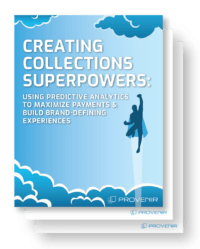It’s just over 30 years since The Simpsons first aired. The show built a reputation on predicting the future; Presidencies, Super Bowl wins, mobile phone technology, Olympic feats… even accurately depicting London skyscrapers, almost 20 years before construction. In a world where truth can often be stranger than fiction, these moments have manifested themselves into real-life. Rather than complex data-driven insight, it was the astute cultural awareness of Matt Groening et al that formed the basis of these ‘predictions’. A keen eye and razor-sharp interpretation of social nuances, cultural insight, and intuition to look at things with a wide lens to determine predictive outcomes.
The world has undoubtedly changed in recent months. In today’s challenging landscape, banks and financial organisations are aware that it’s now as important as ever to make fast and well-informed credit decisions for onboarding new customers; largely driven by increased competition and a rise in customer demands for fully digital processes. But, in a time of economic instability, where financial stress is being experienced by a growing number of households, proactively managing existing customers as effectively as possible is a high priority for lenders; enhancing collections strategies through data insight and predictive analytics is now essential to this process.
Today’s reality is that an increasing number of customers have become, or are becoming exposed, with a reduced or uncertain-level of income and a recent history of payment holidays across multiple products. A recent study from Transunion highlights that 53% of UK consumer household income has been impacted, with 68% now concerned with how they are going to pay current bills and loans. When asked which bills are most concerning, credit cards (37%), mortgages (24%), personal loans (22%), and car payments (18%) rank high. These concerns are undoubtedly being shared by an ever-growing number of global households.
The industry is facing challenges and change. The existing customer-base is concerned about meeting repayments, and many are faced with reduced income or redundancy in higher impacted sectors like hospitality, travel, and engineering. Adaptation is now required from both borrowers and lenders to ensure the best outcomes are achieved through the collections process. Lenders need to be equipped to handle increased volumes of cases and mitigate losses, all while building strong relationships with customers who need their proactive support. We recently launched our latest eBook where we outlined some of the key ways predictive analytics, supported by technology, can combat the increasing challenges faced by collections teams. Through early-warning triggers, predictive models, ML solutions that deliver default rate predictions, and wide-ranging real-time data sources, lenders can access advanced capability when it comes to predicting delinquencies and deploying multi-channel customer communication strategies. Banks and lenders can no longer rely on credit bureaus alone to inform their collection strategies or time-delayed manual assessments to identify higher-risk customers.
Supported by technology, here are my top three actionable methods that businesses can adopt to increase their ability to predict and enhance their collections strategies:
- Proactively predict delinquencies: Actively monitor accounts for early-warning triggers that could signal impending trouble, such as increasing credit line usage, changing payment behaviour, change in income, and decreasing credit scores. Deploy predictive models to determine which combination of factors often lead to customers entering the collections process. Using batch, real-time, or hybrid processing methods, risk can be identified early by using predictive risk scores and teams can work with customers to ensure the best outcomes.
- Optimize payment/settlement offers: Empowering your team to make the right offer at the right time is an essential part of every collection’s strategy. Agents need to be able to see and analyse all data – from all accounts that have previously defaulted across the portfolio. Analytics tools can rapidly gather and assess this data to predict the optimal offer. Predictive analytics can help agents understand what percentage of debt is normally recovered in similar cases and set the benchmark for likely repayment amounts that can be achieved – supporting lower write-offs and protecting loan loss reserves.
- Optimize contact strategies: To create brand-defining customer experiences, collections teams need to adopt sophisticated and cohesive collections strategies powered by insight. All relevant data and information that informs the best contact method needs to be in one place and easily accessible. This will allow analytics models to be implemented easily, taking into account all documented customer interactions. In a time when customers are choosing which debts to prioritize, creating a brand experience through the tried-and-tested channels (phone, text, email, in-app), can improve engagement, willingness to pay, and customer retention.
We are now in a place where instantly accessible and accurate predictions are now achievable for lenders. With diverse, rich data sources and powerful technology to provide the razor-sharp interpretation of data and insights, lenders can widen the lens on the collections process to maximize the best outcomes for all customers; from Springfield US to Sheffield UK.
How to Take Your Collections Team From Hero To SuperHero
 Download the ebook today to discover the 7 areas where predictive analytics can provide rapid and measurable improvements that empower your business to build brand loyalty and in turn lower loan loss reserves.
Download the ebook today to discover the 7 areas where predictive analytics can provide rapid and measurable improvements that empower your business to build brand loyalty and in turn lower loan loss reserves.